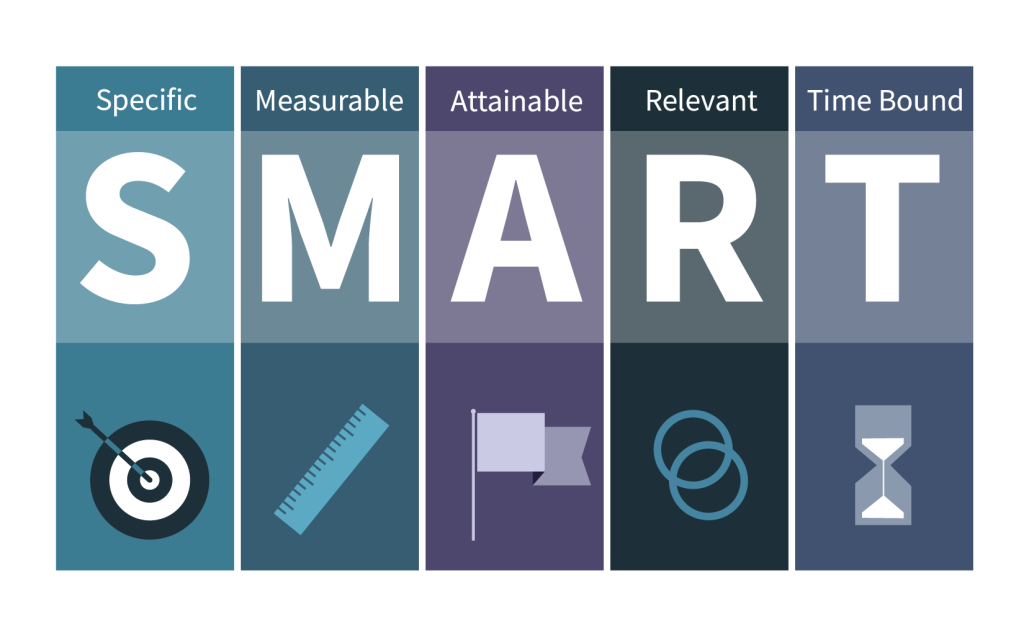4.2 S.M.A.R.T. Goals

Setting goals that are realistic, clear, and attainable can be a challenging task. Therefore, it is important that each goal follows the “SMART” approach. Specifically, a goal should be:
- Specific
- Measurable
- Attainable/Achievable
- Relevant
- Time-bound
SPECIFIC
Try to make your goal as detailed and concise as possible. When doing so, asking yourself the following questions will help you along the way:
- What do I want to achieve?
- When do I want to achieve this?
- Where will I achieve this goal?
- Who may help?
- Why do I want to achieve this goal?
MEASURABLE
Measuring and tracking your progress is important as it can help you maintain your motivation and know when you have reached your current goal so that a new goal can be set. For example, a goal of “I want to complete 30-60 mins of exercise for 3-5 days each week” is easily measured compared to “I want to exercise every day.”
ATTAINABLE/ACHIEVABLE
Try and ensure your goal is actually attainable and not so lofty that it is out of reach! Try to set a goal you believe you can accomplish. Otherwise, it will be difficult to stay focused and motivated. Remember: A goal can be flexible, meaning it can be changed or altered if need be. For example, a goal of “I will exercise every day for four hours” may not be as attainable (or attractive!) as “I will exercise for 30-60 minutes a day.”
RELEVANT
Does this goal matter to you or your organization? This is the question you should ask yourself. If the goal is not pertinent and applicable to you or your organization, then you may have a harder time accomplishing the goal. However, a meaningful goal that aligns with your overall plan will be much more beneficial in the long run and increase motivation.
TIME-BOUND
It is important to have an intended date with which the goal will be accomplished. The result of having a certain time limit will improve your focus and help you stay on course to be successful. Also, having a time frame enables you to measure your progress to coincide with your intended deadline. For example, the goal of “I want to complete 30-60 minutes of exercise for 3-5 days each week” is good, but you could also include “I want to complete 30-60 minutes of exercise for 3-5 days each week for the next 3 months.”
Look at the example below of how to set a “SMART” goal pertaining to personal fitness:
S – I want to be able to run a 5k.
M – I want to be able to run a 5k in 25 minutes.
A – I want to be able to run a 5k in 25 minutes. I will achieve this by running 1 mile twice a week in 7 minutes.
R – I want to be able to run a 5k in 25 minutes so I can successfully complete the Athens Moonlight 5k Run.
T – I plan to be able to successfully run a 5k in 25 minutes by July 15th, 2026.
“6 Smart Goals” in Ch. 5 – Fitness by UGA PEDB Program is licensed under a Creative Commons Attribution 4.0 International License, except where otherwise noted.

